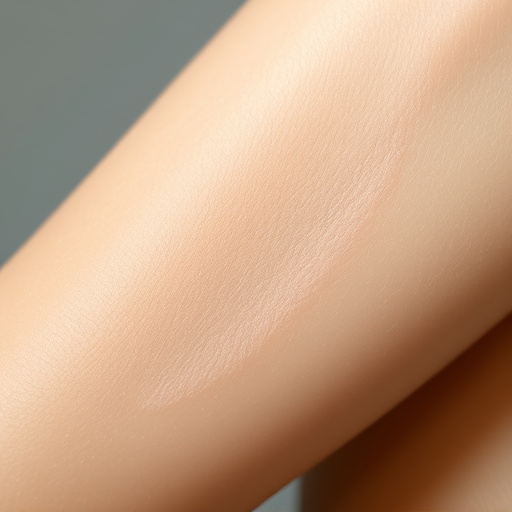Bikini Laser Hair Removal: Post-Treatment Care for Long-Lasting Results
Post bikini laser hair removal, proper care is crucial for optimal results. Allow 24-48 hours for re…….
In the realm of aesthetic treatments, bikini laser hair removal has emerged as a game-changer, transforming the way individuals manage their body hair. This non-invasive procedure promises permanent reduction of unwanted hair in sensitive areas, catering to a diverse range of clients seeking long-lasting solutions. This article delves into the intricacies of bikini laser hair removal, exploring its definition, global impact, economic implications, technological progressions, regulatory landscape, challenges, and future prospects. By the end, readers will gain a comprehensive understanding of this rapidly evolving industry.
Definition: Bikini laser hair removal is a specialized aesthetic procedure that utilizes concentrated beams of light (laser energy) to target and destroy hair follicles, thereby inhibiting hair growth in the treated area. Specifically targeted at the bikini line, this treatment offers a permanent solution to managing excessive body hair.
Core Components:
Laser Technology: The foundation of bikini laser hair removal lies in advanced laser equipment designed to deliver precise energy delivery. Different laser types, such as Diode and Nd:YAG lasers, are employed based on skin and hair characteristics.
Follicle Targeting: Lasers are programmed to penetrate the skin and target melanin within the hair follicle, ensuring minimal damage to surrounding tissue.
Permanent Hair Reduction: The procedure aims for permanent hair reduction by damaging or destroying active follicles, leading to a significant decrease in hair regrowth.
Historical Context:
The concept of laser hair removal dates back to the 1960s when early laser technologies were first explored for hair removal. However, it wasn’t until advancements in laser physics and an understanding of hair growth cycles that bikini laser hair removal became a viable option. Over time, improvements in safety protocols, precision, and efficiency have made this treatment increasingly popular worldwide.
Bikini laser hair removal has transcended geographical boundaries, leaving its mark on various regions around the globe:
North America: The United States and Canada lead the way in adoption rates, with a growing demand for non-invasive beauty procedures. Major metropolitan areas like New York, Los Angeles, and Toronto are hotspots for aesthetic treatments, including bikini laser hair removal.
Europe: Countries such as Germany, the UK, and France have embraced this technology, with a focus on safety and efficacy. European regulations have driven innovations in laser equipment, ensuring high-quality standards.
Asia Pacific: Japan, South Korea, and Australia are experiencing significant growth in bikini laser hair removal, fueled by rising disposable incomes and a growing acceptance of beauty enhancements.
Latin America and Middle East: These regions are witnessing increasing interest due to a combination of cultural influences and the influence of Western trends. Dubai, for instance, has emerged as a hub for aesthetic tourism, attracting clients from across the globe.
Trends Shaping the Industry:
Growing Demand for Non-Invasive Treatments: The preference for quick, pain-free procedures over traditional methods is driving market growth.
Customization and Personalization: Clinics are offering tailored treatments based on skin tone, hair type, and client preferences, enhancing customer satisfaction.
Integration of Technology: Advanced laser systems with smart sensors and real-time feedback mechanisms are improving treatment accuracy and safety.
The bikini laser hair removal market operates within a dynamic economic landscape:
| Economic Aspect | Description |
|---|---|
| Market Size | The global market was valued at USD 3.5 billion in 2021 and is projected to grow at a CAGR of 7.8% from 2022 to 2030, reaching USD 6.2 billion. |
| Investment Patterns | Private equity firms and venture capitalists are investing in laser hair removal startups, fostering innovation and market expansion. |
| Customer Segmentation | The market caters to a diverse range of customers, including millennials, Gen Z, and professionals seeking convenient, long-lasting solutions for their body hair concerns. |
| Revenue Streams | Clinics generate revenue through treatment packages, membership plans, and add-on services like skin care consultations. |
Technological innovations have played a pivotal role in shaping the bikini laser hair removal industry:
Pulsed-Dye Laser (PDL): Early technologies like PDLs targeted melanin in the hair follicle, but they had limitations in treating darker skin tones and coarse hairs.
Diode Lasers: These lasers have gained popularity due to their ability to penetrate deeper, making them suitable for various skin types and hair colors. They offer faster treatment times and are less painful.
Nd:YAG Lasers: Known for their versatility, Nd:YAG lasers can treat a wide range of skin types and hair colors, including tanned skin. They are also effective in destroying deeper follicle layers.
Smart Laser Technology: The latest advancements include smart sensors that adjust laser settings in real time based on skin and hair characteristics, enhancing treatment precision and safety.
The regulatory landscape surrounding bikini laser hair removal varies across regions, impacting the industry’s growth:
United States: The FDA plays a crucial role in regulating laser devices, ensuring their safety and efficacy. Manufacturers must adhere to strict guidelines for marketing and sales.
Europe: Each EU member state has its own regulatory framework, but the Medical Devices Regulation (MDR) sets comprehensive standards for medical devices, including lasers.
Australia: The Therapeutic Goods Administration (TGA) oversees the registration and evaluation of medical devices, ensuring compliance with safety and quality standards.
Rest of the World: Countries like Brazil, India, and South Africa have emerging regulations that are evolving to keep pace with technological advancements in laser hair removal.
Despite its benefits, bikini laser hair removal faces several challenges:
Skin Irritation and Allergies: Some clients may experience temporary skin irritation or allergic reactions, requiring careful screening and post-treatment care.
Treatment Time and Cost: While efficient, treatments can be time-consuming, especially for larger areas. The cost of multiple sessions can be a deterrent for some.
Individual Results Vary: Hair growth rates and follicle sensitivities vary among individuals, leading to varying treatment outcomes. Clinics must manage client expectations accordingly.
Strategies to Overcome Challenges:
Enhanced Training: Educating professionals on proper laser usage and skin care can minimize side effects.
Customized Treatment Plans: Tailoring treatments to individual needs can improve satisfaction rates.
Incentive Programs: Offering flexible payment options and loyalty rewards can make the procedure more accessible.
Challenge: A high-end spa sought to attract a younger clientele interested in cutting-edge beauty treatments.
Solution: They introduced a bikini laser hair removal package, marketing it as a trendy, permanent solution for the modern woman. The package included multiple sessions with advanced Diode laser technology and post-treatment care instructions.
Outcome: The spa witnessed a 35% increase in client bookings within six months, primarily from Gen Z and millennial women. Positive reviews highlighted the procedure’s effectiveness and the professional approach of the staff.
Objective: To position itself as a leading aesthetic destination, Sunlight Clinic aimed to offer a comprehensive range of laser hair removal services.
Strategy: They invested in state-of-the-art Nd:YAG lasers and trained their team extensively on the latest treatment techniques. The clinic also introduced flexible payment plans and loyalty programs.
Result: Within two years, Sunlight Clinic became a popular choice for tourists and locals alike, attracting over 5000 clients annually for bikini laser hair removal treatments. Their success was attributed to combining advanced technology with exceptional customer service.
The bikini laser hair removal market is poised for significant growth:
Targeted Marketing: Personalized marketing campaigns can attract specific demographics, such as millennials and Gen Z, who value convenience and self-care.
Combination Treatments: Offering combined treatments, like laser hair removal with skincare or massage services, could enhance customer experiences.
Telehealth Integration: Virtual consultations and remote monitoring of treatment progress may become common, especially in regions with limited access to specialized clinics.
Sustainable Focus: As environmental consciousness grows, eco-friendly laser equipment and sustainable packaging for post-treatment care products could be market drivers.
Bikini laser hair removal has evolved from a niche procedure to a mainstream beauty trend, offering permanent solutions to body hair management. With technological advancements, growing global acceptance, and varying regional landscapes, the industry is set for substantial growth. As challenges are addressed through improved training, customized treatments, and innovative marketing strategies, bikini laser hair removal will continue to shape the aesthetic landscape, catering to diverse client needs worldwide.
Is bikini laser hair removal painful?
How many sessions are typically needed?
Does it work on all skin types?
Are there any long-term side effects?
Can I get insurance coverage for this procedure?

Post bikini laser hair removal, proper care is crucial for optimal results. Allow 24-48 hours for re…….

Bikini laser hair removal is a popular, effective, non-invasive procedure that uses targeted lasers…….

Bikini laser hair removal is a popular, non-surgical treatment that uses lasers to target and destro…….